 The Lessard-Sams Outdoor Heritage Council voted Oct. 7 to recommend nearly $100 million total for 38 projects. The recommendations range from $442,000 to Cass County for acquiring key forest habitat lands up to $9 million to Ducks Unlimited for continuing its program to protect shallow lakes and wetlands. See the complete list on the council website.
The funding recommendations will go to the 2015 Minnesota Legislature, which will make the final decision on awarding funding from the Legacy Amendment.
The council originally received 46 proposals totaling more than $221 million in response to its call for funding requests. The requests added up to more than double the $100 million expected in available funding for projects that protect, restore and enhance wetlands, prairies, forests, and habitat.
|
Most people know spawning salmon migrate from the ocean back to the rivers and streams where they were born. Something similar happens in the Red River basin and other basins in Minnesota. Fish that spend most of their time in the main part of the Red will, during spawning season, go searching for good habitat by swimming up the Red’s tributaries.
At least they used to.
Some of the best spawning habitat in the basin is located upstream in the Sandhill River in what’s known as the beach ridge area, a transition zone where thousands of years ago retreating glaciers left behind gravel and other features that make fish hot to trot. The problem is getting there.
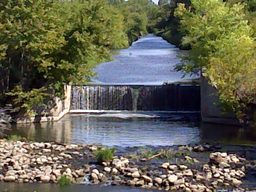 Fish on the make can’t move up the Sandhill without literally running into concrete walls. Over the years, the river’s natural meandering shape was straightened and channeled. But doing this sped up the flow of water and increased erosion and flooding. In an attempt to control these impacts, six dams were installed in the Sandhill. These structures did not really do much to prevent problems but instead have caused several environmental issues, including preventing fish from reaching good spawning habit upstream. Photo at right is an example of barriers to fish passage in the Sandhill River.
Evidence of this is captured in the Sandhill River Watershed Biotic Stressor Identification Report recently published by the Minnesota Pollution Control Agency (MPCA). Agency staff conducted on-the-ground surveys to record conditions in the watershed that pose a threat to aquatic life: fish, aquatic insects and other creatures. In addition to the problem of fish being prevented from moving upstream (known as loss of connectivity), the report identified issues with:
- Too much sediment and too little dissolved oxygen;
- Alterations that have caused the river to have very high flows during spring runoff and summer rain events and very low or no flow late in the summer and fall; and
- Poor habitat (caused by a variety of factors).
Specifically, the report shows many species of fish were only found downstream of dams or other control structures, including larger fish such as channel catfish, walleye, rock bass, goldeye, and sauger.
The Sand Hill River Watershed District, in cooperation with the Minnesota Department of Natural Resources, has a plan to restore upstream fish migration in the Sand Hill by modifying the dams. The plan is recommended for funding from the Lessard-Sams Outdoor Heritage Council. The goal is to complete this work by transforming the barriers into a series of riffles that pose little hindrance to fish bent on finding fertile habitat in the 50 miles of the river located upstream of the dams.
Reconnecting this substantial spawning and rearing habitat will improve the composition and quality of the fishery both in the Sand Hill River and the entire Red River basin. The work is expected to help efforts to reestablish lake sturgeon in the basin.
|
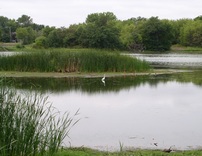 The MPCA is seeking feedback on a draft water quality improvement report for seven lakes in the Rice Creek watershed. Public comments will be accepted through Oct. 21.
The seven lakes addressed in the report are located in Ramsey and Anoka counties: Little Lake Johanna, the north and south basins of Island Lake, the south basin of Long Lake, East Moore Lake, Pike Lake, and Lake Valentine.
The lakes in this study are considered impaired because they contain excess levels of phosphorus. Bodies of water with excess phosphorus are prone to frequent algae overgrowth, which interferes with swimming, fishing and recreation. According to the report, phosphorus levels in these lakes must be reduced by up to 55 percent, depending on the lake, to meet state standards.
The predominant sources of phosphorus to the Rice Creek watershed lakes are urban stormwater runoff and release from sediment within the lakes.
The MPCA report, known as a Total Maximum Daily Load report, or TMDL, is part of a nationwide effort to clean up pollution in lakes and streams. The purpose of a TMDL report is to quantify pollutant levels in an impaired water body, identify the sources of the pollution, and propose ways to bring water quality back to an acceptable level.
After reviewing comments from the public and obtaining approval from the U.S. Environmental Protection Agency, the Rice Creek Watershed District, along with the cities and other partners will continue ongoing implementation efforts to improve water quality in the lakes.
For more information or to submit comments, contact Chris Zadak (Chris.Zadak@state.mn.us, 651-757-2837), MPCA, 520 Lafayette Rd., St. Paul, MN 55155.
Comments, which must be in writing, need to:
- Include an explanation of the commenter’s interest in the TMDL report;
- Provide a clear statement of any recommended changes (including references to specific sections of the TMDL); and
- Give specific reasons for any proposed changes.
|
North Fork Crow River Watershed
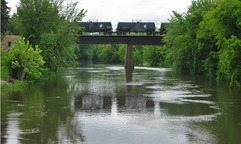 The MPCA is seeking comments on a watershed restoration and protection report for the North Fork Crow River Watershed. The report, known as a Watershed Restoration and Protection Strategy (WRAPS), summarizes monitoring, water quality improvement projects and Total Maximum Daily Loads (TMDLs) completed over the past several years, and identifies strategies necessary to restore and protect the watershed. A public comment period continues through Nov. 12.
The North Fork Crow River watershed includes parts of Kandiyohi, Meeker, Pope, Stearns, Hennepin, McLeod, Carver and Wright counties. Pollutants of concern include sediment and other suspended solids, bacteria and excess nutrients. Degraded habitat for fish due to ditching and channelization is also a concern. Strategies to protect and restore streams and lakes in the watershed include:
- Fixing or upgrading septic systems;
- Managing livestock, pasture and feedlots, along with crops and manure, to reduce pollutants going to water bodies; and
- Protecting shorelines.
Comments may be submitted to Margaret Leach, MPCA, 7678 College Road, Baxter, MN 56425 or by e-mail to Margaret.Leach@state.mn.us by 4:30 p.m. on Nov. 12. For more information, call Leach at 218-316-3895 or toll-free at 800-657-3864.
|
Mississippi River-St. Cloud Watershed
 The MPCA is also seeking comments on a watershed restoration and protection report and a water quality report for the Mississippi River-St. Cloud Watershed. The watershed includes all or parts of Benton, Meeker, Mille Lacs, Morrison, Sherburne, Stearns and Wright counties.
The first report, known as a Watershed Restoration and Protection Strategy (WRAPS), summarizes monitoring and water quality improvement projects completed over the past several years, and it identifies strategies necessary to protect the Mississippi River-St. Cloud Watershed. The WRAPS summarizes physical, chemical and biological assessments of the water quality; identification of impairments and water bodies in need of protection; identification of living organism stressors and sources of pollution; and proposed strategies and actions designed to achieve and maintain water quality standards and goals.
The second report, known as a Total Maximum Daily Load (TMDL), addresses several water quality impairments in three stream sections and 13 lakes within the watershed. The TMDL report focuses on determining the amount of a pollutant(s) that a water body can receive without violating water quality standards.
A public comment period for both reports continues through Nov. 12.
Written comments may be submitted to Phil Votruba, MPCA, 7678 College Road, Baxter, MN 56425 or by e-mail to phil.votruba@state.mn.us by 4:30 p.m. on Nov. 12. For more information, call Votruba at 218-316-3901 or 800-657-3864.
|
How to comment
Written comments must include:
- A statement of your interest in the draft WRAPS report;
- A statement of the action you wish the MPCA to take, including specific references to sections of the draft WRAPS that you believe should be changed; and
- Specific reasons supporting your position.
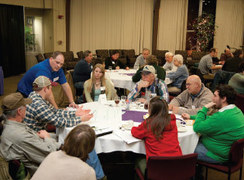 The Whitewater River Watershed Project will hold a citizen-led conversation at a dinner Nov. 12 to gather input on a proposed 10-year action plan for the Mississippi River-Winona watershed. This action plan is the culmination of a holistic approach to protecting and restoring streams in the watershed, which included:
- Intensive water monitoring throughout the watershed;
- Assessing the waters to determine if they meet water quality standards;
- Identifying conditions that stress stream life; and
- Drafting strategies to protect healthy waters and restore impaired waters.
The dinner, from 5-8:30 p.m., will be held at the Tau Conference Center, 511 Hilbert St., Winona. There is no charge for dinner but an RSVP to 507-457-6521 is required. For details, visit the watershed project’s website. Seating is limited so call soon if planning to attend.
The watershed approach and dinner are funded by the Clean Water Legacy Amendment, with the MPCA as a partner.
|
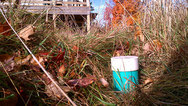 (Editor’s note: Local partners, feel free to use this news release in your newsletter and on your websites. See the complete story on the MPCA website.)
Now is a good time for families to make sure their septic systems are ready for winter. Following a few tips now can prevent costly problems later this fall and winter:
Prevent freezing in the first place — Insulation is key to preventing pipes and drainfields from freezing. Allowing grass to grow an extra six inches over the entire system (septic tank, connecting pipes and drainfield/mound) in the fall can protect them from frost. Another good insulator is a layer of mulch (straw, leaves, hay, etc.) spread eight to 12 inches deep over the system. Other ideas include maintaining wildflowers or native grasses over your tank and system.
Don’t be a drip, keep it hot — Dripping faucets trickle water into the system which can cause ice to build up and eventually freeze a pipe closed, often right where the septic pipe leaves the home. Fix all leaks and keep the system "energized" with regular doses of warm water during the winter ― the warmer the better. Spread out your laundry schedule so you run one warm/hot load a day. Use the dishwasher and take hot baths. However, DO NOT leave water running all the time, as this will hydraulically overload the septic system.
Keep off the grass (and snow) — Keep all vehicle, animal and human traffic off the system. This is a good rule to follow all year long as compacted snow and soils cause frost to go down deeper and faster. Pay special attention to the area between the house and the septic tank. Stay off these areas even during the winter as compacted snow provides much less insulation than undisturbed snow.
Keep new systems under cover — A new septic system covered with bare soil can have problems with freezing the first year. Cover a new tank, mound/drainfield with an insulating layer of mulch or similar loose material.
It’s frozen. Now what? — If your septic system freezes, call a septic system professional. For Minnesotans, the MPCA website includes a search tool for finding certified professionals in your area. Search online for " MPCA SSTS licensed business search."
If it’s not feasible to correct a problem, the only option is using the septic tank as a holding tank until the system thaws naturally in the spring. Have a pumper empty the tank when it starts to fill up.
There are some things you should never do to try to fix a frozen system:
- Do not introduce antifreeze, salt or a septic system additive into the system.
- Do not pump sewage onto the ground surface.
- Do not start a fire over the system to attempt to thaw it out.
- Do not run water continually to try to thaw the system. This can overload the system.
|
St. Paul’s Lowertown Regional Ballpark, currently under construction and future home to the St. Paul Saints, will harvest rainwater for indoor use, Minnesota’s first such municipal project.
At the next Mississippi River Forums, Wes Saunders-Pearce, St. Paul’s water resources coordinator, will speak on how this project navigated regulatory issues, why St. Paul sees it as an important opportunity to demonstrate sustainable water management, and how others can apply lessons learned from this project.
The forums will be:
- Friday, Oct. 17, from 8-9:30 a.m. at the McKnight Foundation, 710-2nd Street South, Suite 400, Minneapolis; and
- Friday, Nov. 21, from 8-9:30 a.m. the St. Cloud City Council Chambers, 400-2nd Street South, St. Cloud.
A light breakfast will be provided at no charge, but an RSVP to Lark Weller of the National Park Service is required.
Environmental Initiative and the seven state agencies responsible for implementing the Clean Water Fund have completed "Minnesota's Clean Water Roadmap." The roadmap articulates high-level goals for the 25 years of the Clean Water Legacy investment. In combination with other strategies, including local water plans, the agencies will use the roadmap to guide their activities under the Clean Water Fund to protect and restore Minnesota's water resources. The roadmap is posted on the MPCA website. The agencies will be presenting the roadmap Oct. 20 at the Clean Water Council meeting.
"Outstate cities plan to challenge state water regulations" in the Star Tribune
"Above and beyond: 200 pounds of gear, 3 canoes, and no DEET" on the MPCA’s website
"DNR chief: Expect PolyMet environmental review by early spring" on Minnesota Public Radio
"Buffer strip violators must pay" in the West Central Tribune
|